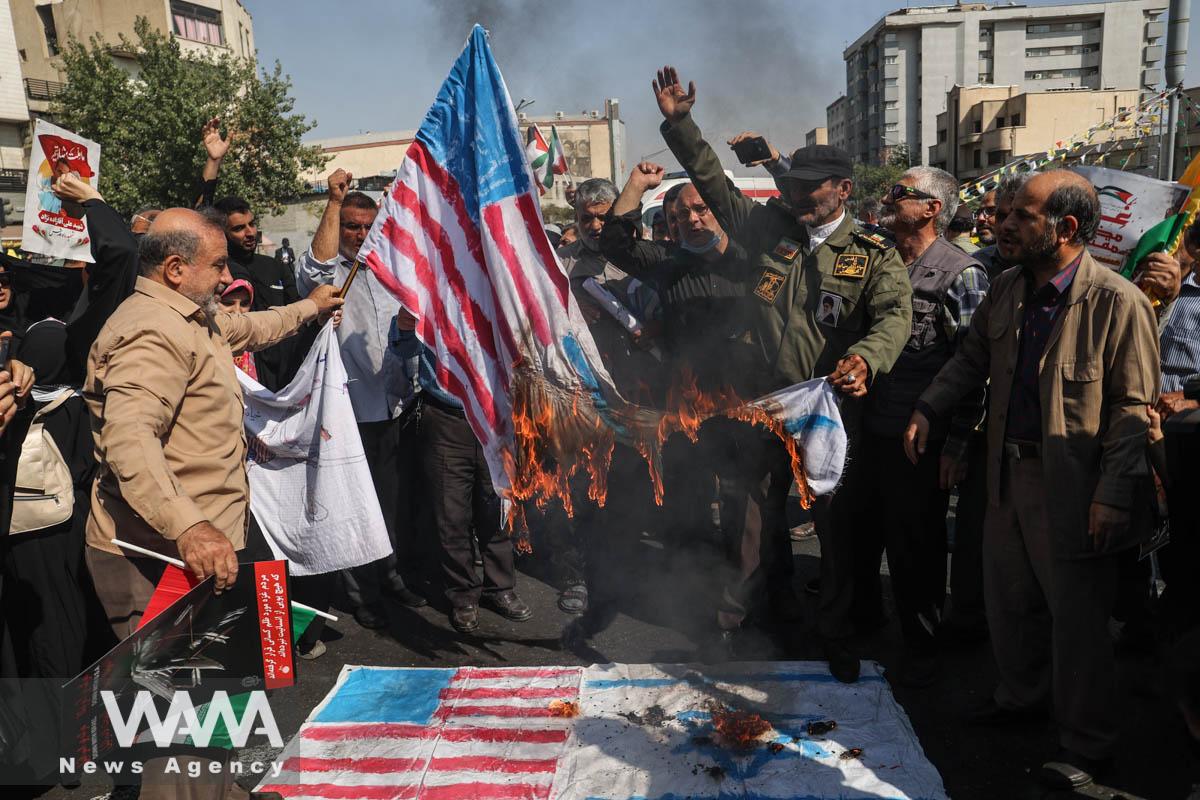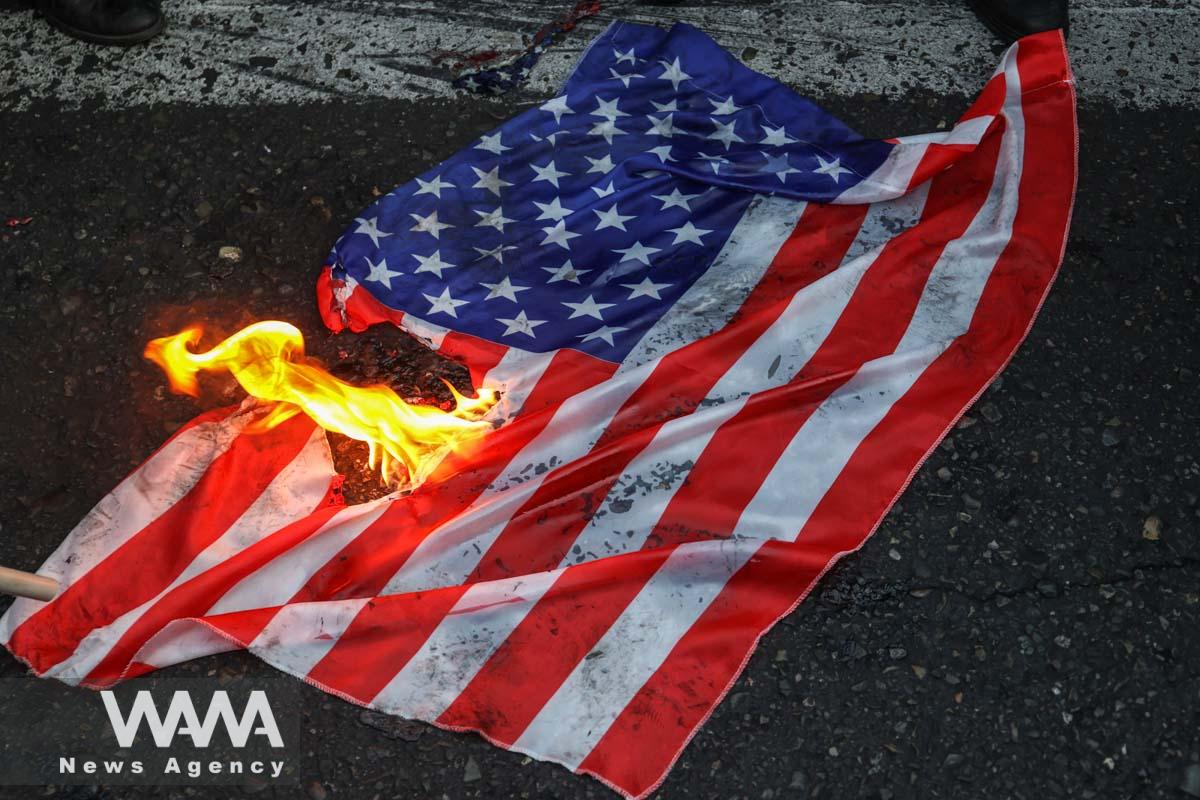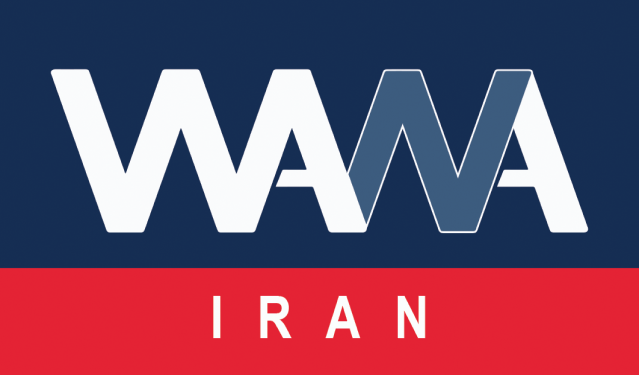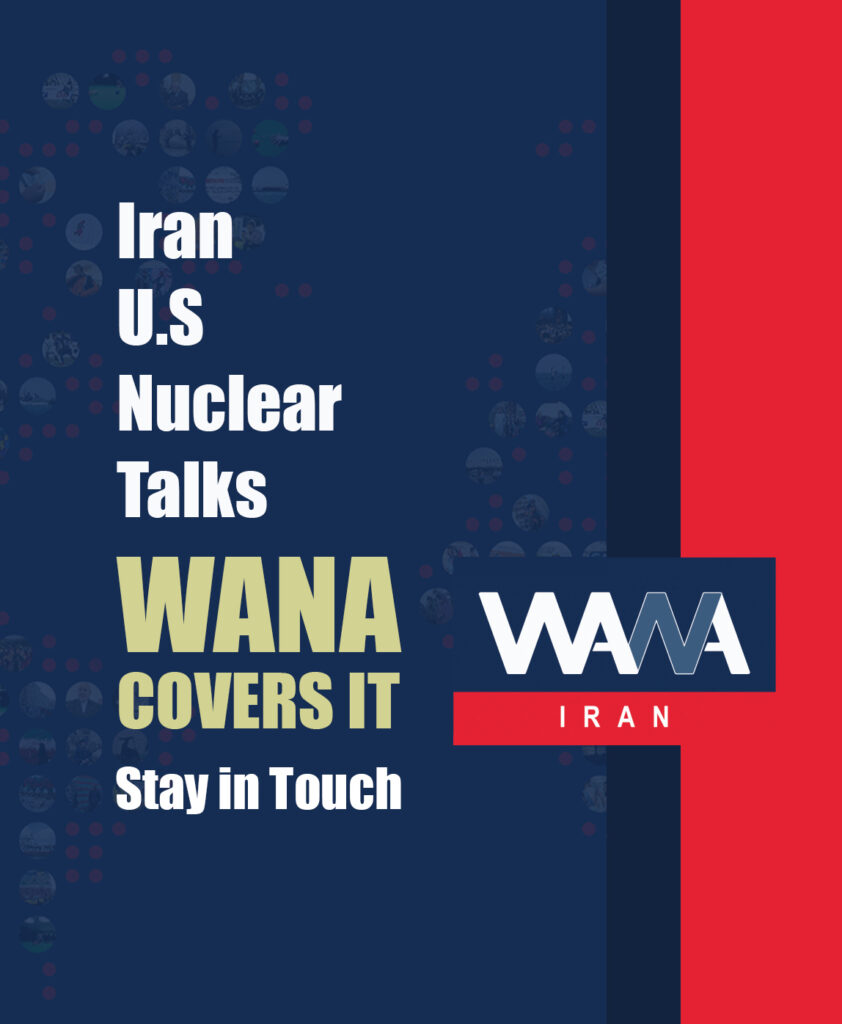U.S. Flag Removed from the Ground of Iran’s Government Courtyard: Symbolic or Strategic?
WANA (Jan 20) – Recently, the design of the U.S. flag was removed from the ground of courtyard of Iran’s government compound—an action that, while seemingly simple, carries messages and implications far beyond a routine executive decision. The practice of placing the U.S. flag on the ground has long been a symbolic tradition, prominently featured in demonstrations and occasionally in governmental buildings.
Before the current Iranian administration took office, the design of the U.S. flag was displayed on the ground of the Kosar building in the presidential compound. However, under the new policies of the 14th government, this emblem has now been removed.
President Pezhkian has repeatedly emphasized the importance of constructive global engagement. In a recent interview with NBC, he expressed Iran’s readiness for dialogue. Within this context, removing the design of the U.S. flag could signal an attempt by the Iranian government to de-escalate symbolic tensions.

Demonstrators burn the US and Israeli flags against Israel’s strikes on Gaza and Lebanon during a demonstration in Tehran, Iran, September 27, 2024. Majid Asgaripour/WANA (West Asia News Agency)
Former Iranian diplomat Fereydoun Majlesi described the move as “rational,” stating that it paves the way for more prudent decisions. “A flag represents a nation,” he remarked. “Disrespecting it not only symbolizes animosity but also provides grounds for heightened international tensions.”
Contradiction or Change?
The act of placing the U.S. flag on the ground stems from the early years of the Iranian Revolution, a time when symbolic gestures were prevalent tools for political messaging. However, as Majlesi noted, “Decades later, expectations from governments have evolved, and symbolic acts have been replaced by practical and engagement-driven policies.”

Pezeshkian: Iran Has “Never” Planned the Assassination of Donald Trump
WANA (Jan 15) – In an exclusive interview with NBC News, Iran’s President, Massoud Pezeshkian, stated that Iran is fundamentally ready for dialogue with a potential second term of Donald Trump’s administration. He emphasized, however, the importance of honoring commitments made during such negotiations, adding that Iran has “never” planned the assassination of Donald Trump […]
It appears that the 14th Iranian government is attempting to distance itself from these past practices, sending a different message to the international community.
Although fundamental disagreements between Iran and the U.S. persist, eliminating provocative actions could create a more conducive environment for dialogue. Meanwhile, some critics argue that such steps are merely symbolic and question their actual impact on bilateral relations.
This change reflects a policy shift that prioritizes national interests and global engagement over symbolism. As Majlesi pointed out, “Abandoning unconventional practices is not only logical but also removes excuses from the opposing side.”

Protesters burn the US flag during an anti-Israel protest in Tehran, Iran, October 18, 2023. Majid Asgaripour/WANA (West Asia News Agency)
In a time when regional and global tensions weigh heavily on Iran, such measures could convey a positive message to the international community and potentially pave the way for future practical steps.
The question remains: Can Pezhkian’s administration sustain this approach, or will this move remain merely a diplomatic gesture? While Iran’s foreign policy has always faced significant challenges, such changes could mark the beginning of a new chapter—particularly in a world seeking to reduce tensions and promote constructive dialogue.

What is Trump’s 2025 Strategy Towards Iran?
WANA (Dec 23) – Following the helicopter incident involving Ebrahim Raisi, the late Iranian president, American analysts predicted his replacement by a more radical figure, potentially leading to internal fractures and diminished stability within the Islamic Republic. However, these forecasts quickly proved incorrect. The Islamic Republic demonstrated its resilience by restructuring its systems and achieving […]













